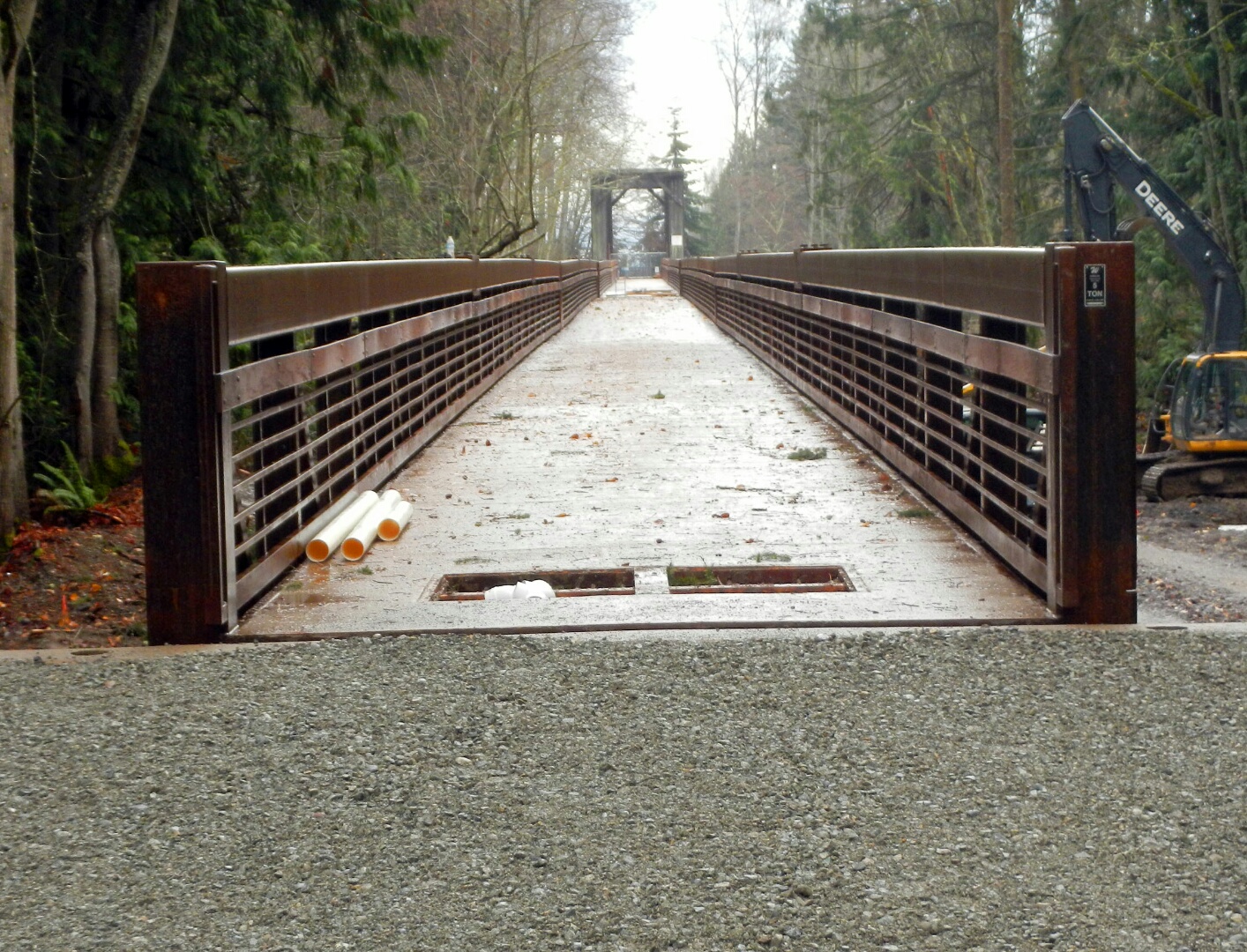How do we solve big flood events? By listening and learning from each other.
10 Months and 2 Days on the Dungeness River
Written and Photographed by Randy Johnson, Habitat program manager, Jamestown S’Klallam Tribe
Aerial Photographs provided by John Gussman
Since the first of February 2015, four floods have rumbled down the Dungeness River. The first one damaged the old creosoted RR trestle and closed the Olympic Discovery Trail (ODT). The three floods in the past six weeks have occurred while we've been building the new pedestrian bridge that will replace the trestle. During the floods, the river has migrated 230 feet west. Had the trestle not been removed, at least 15 pile bents - 75 creosoted piling, creosoted timbers, and bridge decking - would have been knocked down and strewn all the way from the Dungeness River RR Park to Dungeness Bay.
It was a given that the Tribe would replace the trestle's functions for users of the Olympic Discovery Trail. 10 Months and 2 days later, the entire 585' of trestle and its dripping creosote are gone from the floodplain forever and 720 feet of salmon friendly and river worthy pedestrian bridge is connected to the ODT. All 750 feet of new bridge are now in place, and just a few relatively minor tasks remain. The construction access road is being removed, and by the end of today both floodplain channels will be flowing free again. You can look forward to the ODT being reopened soon.
Floodplains by Design funding was a perfect fit for this project because of the program’s focus on reconnecting rivers to their floodplains for fish and flood risk reduction, and the additional community benefit of recreational access.
Thank you everyone for your role in making this bold vision a reality.
2015 Floodplains by Design Workshop
By Bob Carey, Strategic Partnerships Director
Photography by Julie Morse and Tom Bugert
How do you create a regional vision for Puget Sound’s rivers and floodplains? By bringing together diverse stakeholders for a day of strategizing on how to develop the funding, science, partnerships and permits needed to manage our river systems more sustainably and effectively.
The third Floodplains by Design partnership workshop, organized by The Nature Conservancy and held in February 2015, was attended by more than 160 people—all focused on improving floodplain management across the region. In the crowd: tribes, agriculture, state and federal agencies, municipalities, counties, universities, business and environmental organizations. The diversity of interested parties and partners is part of what makes this program so unique and successful.
The meeting highlighted the substantive, on-the-ground results that have been accomplished over the last year and the work that lies ahead to generate the funding and plans needed to realize Floodplains by Design goals. Breakout sessions helped participants think about new ways to implement their work. Among the topics:
- How to better integrate flood risk reduction and ecosystem restoration goals
- Creating stronger partnerships with the agricultural community
- Getting great projects permitted in an efficient manner
The day was filled with information sharing and useful connections that will help everyone in their work. There’s a power in feeling like part of a bigger effort. As one participant said, “These events always rekindle my enthusiasm!”
The popularity of these workshops shows growing interest in this innovative effort to make our floodplains more productive and resilient for people and nature. Generous support from these partners makes these events possible: U.S. Environmental Protection Agency, Washington Department of Ecology, NOAA Fisheries, Boeing Company, Puget Sound Partnership, the Russell Family Foundation and the National Fish and Wildlife Foundation.
Participants came away inspired, and so did the Nature Conservancy and FbD partner staff. Seeing the passion for a program that is making a difference fills us with new ideas and energy as we work to implement floodplains projects that protect our communities and restore our rivers.




























